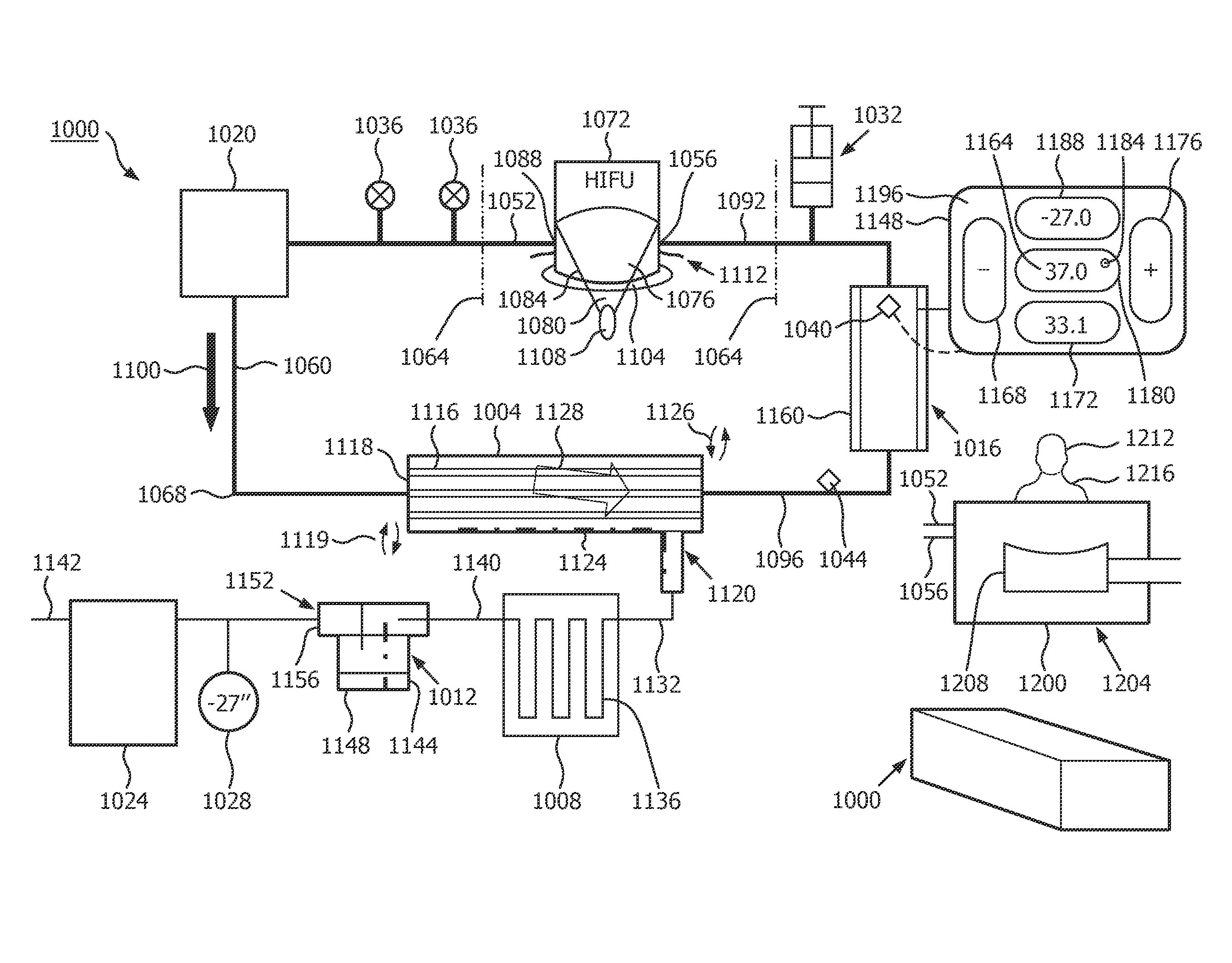Heat exchange in fluid degassing
a fluid degassing and heat exchange technology, applied in liquid degasification, separation processes, ultrasonic/sonic/infrasonic diagnostics, etc., can solve problems such as animal exposure, failure to properly degas the water, and unnecessary stress and discomfor
- Summary
- Abstract
- Description
- Claims
- Application Information
AI Technical Summary
Benefits of technology
Problems solved by technology
Method used
Image
Examples
Embodiment Construction
[0053]FIG. 1 shows, by illustrative and non-limitative example, a temperature-control / fluid-degassing device 1000. The embodiment shown in FIG. 1 pertains particularly to an inline device, but also shows components usable in a batch device. An inline device will be discussed first.
[0054]The degassing device 1000 includes a degassing chamber (or “degassing filter cartridge”) 1004. Also included are a cooler 1008 and a water trap 1012. Among the further components of the device 1000 is a heater 1016, a self-priming circulation pump 1020, a vacuum pump 1024, a vacuum gauge 1028, a water-volume-adjustment expansion tank 1032, and system fill / drain valves 1036. An additional component is an on-heater temperature sensor 1040, or alternatively an inline temperature sensor 1044. The device 1000 also includes a user interface 1048 such as a touchscreen; water inlet tubing 1052, water outlet tubing 1056; internal water transit tubing 1060; and a housing 1064. The device 1000 further includes ...
PUM
| Property | Measurement | Unit |
|---|---|---|
| operating temperature | aaaaa | aaaaa |
| operating temperature | aaaaa | aaaaa |
| weight | aaaaa | aaaaa |
Abstract
Description
Claims
Application Information
 Login to View More
Login to View More - R&D
- Intellectual Property
- Life Sciences
- Materials
- Tech Scout
- Unparalleled Data Quality
- Higher Quality Content
- 60% Fewer Hallucinations
Browse by: Latest US Patents, China's latest patents, Technical Efficacy Thesaurus, Application Domain, Technology Topic, Popular Technical Reports.
© 2025 PatSnap. All rights reserved.Legal|Privacy policy|Modern Slavery Act Transparency Statement|Sitemap|About US| Contact US: help@patsnap.com


